

Penmachine
28 February 2009
Cox Bay, Tofino
This other beach is pretty swell too. Yeah, we were supposed to be home by now, but we decided to take a side-trip before returning to the mainland.
26 February 2009
I like this beach
24 February 2009
Eagles from the window
This morning we looked out the window of our hotel room in Parksville, B.C. to see two bald eagles sitting on the sand as the tide went out. Later, when the family explored the beach, my wife Air found their talon marks, still fresh:
I assume they were resting, either before or after hunting, since they stayed in essentially one place for at least 45 minutes. Bald eagles aren't uncommon in our neck of the woods—we often see them flying from our front window in Burnaby, usually while they're being harassed by gulls or crows. But they don't often land in our vicinity at home.
However, last time Air and I came to the middle of Vancouver Island, in 1997 before our kids were born, we also saw a bald eagle from our hotel room at the bach. We also nearly ran one over with our car on the way to Port McNeill. Fortunately, we avoided anything like that this time: they are huge birds, and rather intimidating close up.
I assume they were resting, either before or after hunting, since they stayed in essentially one place for at least 45 minutes. Bald eagles aren't uncommon in our neck of the woods—we often see them flying from our front window in Burnaby, usually while they're being harassed by gulls or crows. But they don't often land in our vicinity at home.
However, last time Air and I came to the middle of Vancouver Island, in 1997 before our kids were born, we also saw a bald eagle from our hotel room at the bach. We also nearly ran one over with our car on the way to Port McNeill. Fortunately, we avoided anything like that this time: they are huge birds, and rather intimidating close up.
23 February 2009
How to take great point-and-shoot photos
 Via Jason Kottke, here is a useful article
on how to make great photos using your point-and-shoot digital
camera—by learning from the great photographers who shot film decades
ago with even more limited equipment.
Via Jason Kottke, here is a useful article
on how to make great photos using your point-and-shoot digital
camera—by learning from the great photographers who shot film decades
ago with even more limited equipment.You can only learn so much from people who frequently work in ways that are impossible for you. What if there were truly masterful photographers who worked with cameras with all the limitations of yours and more? Couldn't they be role models? Luckily, there are boatloads of them: every documentary photographer working from the 1930s to the 1980s.The basics? Learn to compose, let black be black, use black-and-white when appropriate, photograph near windows with natural light, and take lots of pictures, then edit—pick the best shots from the many you have. If you get really good, you might regularly capture the decisive moment in single shots like Cartier-Bresson, but that will take time.
21 February 2009
Northern Voice 2009, day 2
20 February 2009
Northern Voice 2009, day 1
19 February 2009
A bit of a shock
 Our friend Kim is one of the designers competing on this season's Project Runway Canada,
so we've been watching the show since it started a few weeks ago. It
was filmed last summer in Ottawa. At the end of this Tuesday's episode, I
was shocked to see an announcement that one of the designers, Danio Frangella (who left during the first episode because of health complications) died last week of cancer. He was 34.
Our friend Kim is one of the designers competing on this season's Project Runway Canada,
so we've been watching the show since it started a few weeks ago. It
was filmed last summer in Ottawa. At the end of this Tuesday's episode, I
was shocked to see an announcement that one of the designers, Danio Frangella (who left during the first episode because of health complications) died last week of cancer. He was 34.He was not in good shape during that first episode, because he'd been undergoing cancer treatment for seven years, and had trouble walking because of his leg ulcers. Learning that he had died gave me a chill, because of course I have cancer too, and have had it for a couple of years now. Indeed, this week it is exactly two years since I began my medical leave from work. Two years!
If you haven't had cancer or known someone with it, you tend to assume that once someone gets it, they either get treated and go into remission (or are cured), or they die pretty swiftly. Those aren't the only alternatives. Many people live with the disease for years, sometimes decades, undergoing treatments and adjusting their lives around their symptoms and side effects. Danio was one of those, and so am I.
Even successful treatments may not be what you expect. Most statistical studies look at cancer treatments as successful if their subjects are still alive after five years—you often see "five-year survival rates" in such studies. I suppose that's fine if you're a researcher, or if you're a cancer patient in your 70s or 80s.
But if you're not yet 40, like me, or like Danio, five years isn't a very long time. I have a decent chance of surviving five years past my diagnosis, but that's not enormously encouraging, not when most people my age are thinking ahead a lot more than five years. I'm already almost half-way to the five-year mark. All the medications I've taken since 2007 haven't done what they really need to do, which is stop or reverse the nine small metastatic tumours still growing (slowly) in my lungs. On the other hand, I've also already lived longer than a lot of people diagnosed with my sort of aggressive colon cancer do.
One of the first things my gastroenterologist Dr. Enns told me back in '07 is that while there are tons of statistics out there on cancer survival rates, no one person is such a number, and the statistics can't predict how one person's disease will progress, or how long they will live. Just yesterday my oncologist Dr. Kim noted that research shows physicians to be notoriously poor at predicting life expectancy for cancer patients—no better than patients do ourselves, and in many cases no better than a wild guess.
As I wrote recently, I have "months certainly, years quite possibly" to live. How many years, I don't know. Nobody knows. Will I see my kids graduate from high school, or reach my 20th wedding anniversary with my wife in 2015? It's possible, but unless a new treatment starts working, or I go into remission because of lifestyle changes or another reason in that time, it may not be likely.
Then again, some people die young in car crashes or for other reasons, never anticipating their last day, or their last minute. If I'd been born 100 years ago, I would probably have died in my early 20s from diabetes, and might never have married or had children, or even seen a website, let alone built one like this. And if I lived in Swaziland (where 38% of adults have AIDS) or Afghanistan (with astronomical rates of infant mortality), even today, I'd be at the end of the average male life expectancy already.
Here, I am lucky to have a wonderful family, and support, and great health care, and I can still choose to live, to enjoy it, to write what you read, and to make my life as long and happy as I can.
18 February 2009
Behind the curtain
This is useful: sitonomy.com (via J-Walk). For example, if you point it here, it tells you that I use Blogger for publishing, several web stats packages, and the Apache web server software. It will also identify widgets, affiliate programs, ad networks, web feed processors like FeedBurner, programming languages, content delivery networks, and so on if it can find them.
You can also point it to any individual page URL, so you can see what's different about my top headphone albums page: I have Amazon affiliate links and AdSense ads there, but not on the home page.
It's not as detailed in its specifics as, say, the Netcraft server query form (which will tell you my server software changes since 2002), but there's a lot more information at Sitonomy overall.
You can also point it to any individual page URL, so you can see what's different about my top headphone albums page: I have Amazon affiliate links and AdSense ads there, but not on the home page.
It's not as detailed in its specifics as, say, the Netcraft server query form (which will tell you my server software changes since 2002), but there's a lot more information at Sitonomy overall.
16 February 2009
It's still winter
15 February 2009
Worldly stuffies
Here's a measure of our world. My daughters chose some new plush toys
for themselves today, bought with their own money. Both animals the
toys represent (a penguin and a koala) are from the southern hemisphere.
They girls dressed them in a cowboy hat and Irish green clothes in honour of St. Patrick's Day next month (for Sparky the penguin), and stereotypical Canadian getup of plaid winter hat with earflaps, fleece vest, and red "Canada" shorts (for Ringo the koala):
So we have an Antarctic aquatic bird in Irish and American clothes with a semi-American name, and an Australian marsupial in Canadian gear with an English name. Oh, and if you squeeze Ringo's hand, he roars like a Tyrannosaurus.
They girls dressed them in a cowboy hat and Irish green clothes in honour of St. Patrick's Day next month (for Sparky the penguin), and stereotypical Canadian getup of plaid winter hat with earflaps, fleece vest, and red "Canada" shorts (for Ringo the koala):
So we have an Antarctic aquatic bird in Irish and American clothes with a semi-American name, and an Australian marsupial in Canadian gear with an English name. Oh, and if you squeeze Ringo's hand, he roars like a Tyrannosaurus.
How to make a pleasant airport
Salon's Patrick Smith, pilot and aviation writer, has a great list of 15 things all airports should have, created in consultation with his readers:
If you're killing time at YVR, I strongly recommend a (slightly pricey) meal or drink in the lounge of the attached Fairmont Hotel. It's quiet, comfortable, the food is good, and you can both watch the aircraft and enjoy a nice view of our mountains. We try to go there anytime we're flying, or even dropping off or picking up family and friends.
- A fast, efficient, low-cost public transportation link to downtown
- Complimentary wireless Internet
- Power ports
- Convenience stores ("What's with all the luggage stores? Who the hell buys luggage after they get to the airport?")
- Showers and a short-stay hotel
- Play area for children
- ATMs
- An information kiosk
- A place to send mail and buy postage
- A bookstore
- Ample gate-side seating: at least as many chairs as there are seats on the plane!
- A quiet area
- Art and greenery
- Double-wide escalators
- Windows with a view of the planes
If you're killing time at YVR, I strongly recommend a (slightly pricey) meal or drink in the lounge of the attached Fairmont Hotel. It's quiet, comfortable, the food is good, and you can both watch the aircraft and enjoy a nice view of our mountains. We try to go there anytime we're flying, or even dropping off or picking up family and friends.
14 February 2009
Party 11
 On
Valentine's Day in Vancouver, on an afternoon in the midst of the 1998
Winter Olympics in Nagano, Japan, our first daughter, M, was born. Today
she turned 11, and had a party at our house.
On
Valentine's Day in Vancouver, on an afternoon in the midst of the 1998
Winter Olympics in Nagano, Japan, our first daughter, M, was born. Today
she turned 11, and had a party at our house.I remember being that age, in 1980, quite well. It was the fourth year in a row that my parents and I traveled to San Diego for summer vacation, and it would be two years before I quit studying classical guitar. It was the first year we had a computer in the house (a borrowed TRS-80 Model I).
My daughter came home from the hospital to a house full of computers. She has been taking music lessons for more than five years, longer than I ever did. She has never been to San Diego, but she has seen Hawaii and the Oregon Coast. She has a little sister, two years younger, while I was an only child. This year she started reading novels. She is smart, and articulate, and loves the Beatles.
Happy birthday, Miss M.
12 February 2009
Darwin day
 Charles Darwin was born 200 years ago
today, and has been dead for almost 127 years. That's a long time in
human terms, but no time at all in the history of life on earth. Though
the true age of our planet (about 4.6 billion years) wasn't yet clear in
his time, Darwin knew that it was very old—old enough to have changed a
whole lot, and for life to have evolved along with it.
Charles Darwin was born 200 years ago
today, and has been dead for almost 127 years. That's a long time in
human terms, but no time at all in the history of life on earth. Though
the true age of our planet (about 4.6 billion years) wasn't yet clear in
his time, Darwin knew that it was very old—old enough to have changed a
whole lot, and for life to have evolved along with it.If he hadn't, someone else would have figured out around Darwin's time that evolution happens by natural selection. The evidence, from geology, paleontology, island ecology, animal breeding, and other fields was there. Indeed, someone else did figure it out, and when Alfred Wallace wrote to Darwin about "the Tendency of Varieties to Depart Indefinitely From the Original Type" in 1857, he spurred Darwin to spend two years compiling his own ideas on the subject (by then 20 years old), in On the Origin of Species, 150 years ago this year.
The discovery
But while the idea of natural selection was ripe for discovery in the mid-1850s, Charles Darwin was uniquely suited to refine and present it. He was a polymath, interested in a huge variety of subjects. He was a well-respected member of the British social and scientific establishment, so his ideas would be heard. He had traveled the world, observing and collecting different species of animals and plants, before returning to England to become a settled homebody, set on performing exacting experiments to tease out the subtleties of biological phenomena.Long before he wrote the Origin, he understood the implications of his discovery, especially to Biblical interpretations of creation—he had trained for the ministry in his youth, and his wife Emma was very religious—so he knew that he would have to assemble all the overwhelming evidence he had, and argue it well, to make his case. That's one reason he waited 20 years.
Despite knowing nothing of genetics, plate tectonics, or modern developmental biology, and having few transitional fossil finds to refer to, Darwin and Wallace were fundamentally correct in their discovery:
- Individual animals, plants, fungi, and unicellular organisms produce more offspring than can survive and successfully reproduce themselves.
- Those offspring vary in numerous characteristics, some of which offer survival and reproductive advantages in their current environment.
- Offspring with variations that offer advantages produce more offspring than their siblings with variations that don't.
- Over time, those individuals with the advantageous variations come to dominate populations.
- Different populations of a single species exist in different environments, and environments also change, so the variations that work best will probably differ between populations and over time. Eventually, those variations compound, and the populations may diverge or evolve into new species.
The mystery
So while many people assume that On the Origin of Species addresses how life originated on earth to start with, it doesn't—that remains a mystery biologists are still trying to solve 150 years later. Darwin himself suggested that life was "originally breathed by the Creator into a few forms or into one."His book solved another mystery altogether: how new species originate from existing ones. In doing so, Charles Darwin effectively created the science of biology, drawing the study of living things into a cohesive subject, where insights in one field (such as the chemical structure of deoxyribonucleic acid inside cells) could relate to others (like the geographic distribution of animals, or even human medicine).
The argument
Darwin was a shy, sensitive family man averse to controversy, but he was also stubborn, logical, meticulous, and a completist. The Origin is over 300 pages, but he wrote it as a mere abstract of the comprehensive book he really wanted to write (and never did). Even in its "abbreviated" form, it is a progressing, relentless treatise, building fact upon fact.He doesn't introduce the concept of natural selection until the fourth chapter (of 15 total). He builds a foundation, introduces his discovery, marshals evidence, raises objections, and addresses them. He talks about instinct, breeding, geology, geography, morphology, and embryology. Then, just to be sure you've got it, he writes a final chapter summarizing everything—all in long Victorian paragraphs.
Honestly, On the Origin of Species is a pretty dull read. But it is a stupendous argument.
The evidence
The test of a scientific theory is not only what it explains, but what it predicts—even beyond what its formulators might have imagined. We know Newton's laws of motion are right because we use them to send men to the moon and probes to planets, and to predict eclipses. We know Einstein was right because lasers actually work, and because gravity really does bend light, whether as close by as the sun or as far away as the most distant galaxies. We know continental drift is real for a bunch of reasons, but today we can even use precise satellite measurements to watch it happening in real time.Countless theories are obsolete because their predictions don't pan out: a young and earth-centred universe under an unchanging dome of stars, four elements (earth, air, fire, water), aether and phlogiston, Lamarckian inheritance, magical alchemy (Isaac Newton was convinced about that one), spontaneous generation, health as a balance of humours, absolute time, the indivisible atom, Darwin's own ideas about the mechanisms of inheritance, and on and on.
We refine other theories based on new evidence, because their predictions are close, but not quite right. Today, for newer theories, we build huge machines just to find out whose predictions match with reality.
What amazes us about Darwin, and Newton, and Einstein (and others)—what shows us that they were right—is that new evidence keeps turning up, and either refines or confirms what their most important theories predict, but doesn't refute it. Newton's theories work so well we hardly think about them: we just buy cameras with refracting lenses, fly in planes with jet engines, drive cars with airbags, or turn on our GPS units, and we expect them to work. Einstein showed some extreme situations where Newton's laws don't properly apply, and we learned from that how to make laser pointers, take radiation therapy, and fear nuclear weapons.
The predictions
Evolution by natural selection, as Darwin and Wallace figured it out, suggested that we would find many other things, such as:- Many more transitional fossil forms—yes, and more all the time.
- Mechanisms for inheritance of variation—those are genes and DNA.
- Ways for geographically distant but related organisms to have once shared ancestors—continental drift and deep time are two big ones there.
- Animals and plants that Darwin surmised must be related because of their appearance and habits also share more DNA than those less closely related—something he could never have known, but that provides two independent lines of evidence to the same conclusion.
- Evolution is usually slow, but in organisms that live and reproduce fast, like the AIDS virus adapting against our drugs, E. coli tolerating poisons in the lab, or antibiotic-resistant bacteria spreading in hospitals, we can see it happen over mere decades.
- Using biotechnology, we can synthesize new species ourselves—such as by corralling bacteria to make human insulin or to devour oil spills—but only when we apply the genetic mechanisms that we have discovered allow natural selection and drive evolution.
Yet here's the thing: they do.
The day
That's why today, Darwin day, is worth commemorating. Charles Darwin figured out the basis for how life works 150 years ago. He explained it, and no matter how controversial it remains, natural selection is the basis for how we understand the family of all organisms, extinct or living, which includes ourselves, over several billion years.He was a proper Victorian country gentleman, so I doubt anyone ever called him "Chuck." But he's 127 years dead now, so he has no reason to mind my saying this: Happy birthday, Chuck. And thanks.
10 February 2009
Real cutting and pasting
 Graphic designer Michael Bierut is more than a decade older than me, but still, his article in the New York Times (via Kottke)
this week felt familiar. I realized that's because, even though I've
only hacked around the edges of the business of design and layout, I've
been doing it for more than 30 years in some way or another.
Graphic designer Michael Bierut is more than a decade older than me, but still, his article in the New York Times (via Kottke)
this week felt familiar. I realized that's because, even though I've
only hacked around the edges of the business of design and layout, I've
been doing it for more than 30 years in some way or another.More importantly, I belong to what is probably the last generation to straddle the gap between pre- and post-computer design. In elementary school in the 1970s, we made student newspapers with pens on Gestetner mimeograph paper, reproduced on smeary blue-inked sheets just like our notices and test papers. (More than a decade later, I had a used hand-crank Gestetner in my basement to run off newsletters for my computer club the Apple Alliance—there's some irony, or at least foreshadowing, in that.)
By the mid-1980s I was printing out long columns of dot-matrix type to cut and paste (with actual scissors and glue) onto photocopy masters, while also using Letraset rub-on letter stencils for headlines. That was for student newspapers—but putting together our high school annual still involved typewritten text, printed photos, rubber cement, and grease pencil. The real work of typography and layout was left to the professionals we never met at the printing plant in Winnipeg. We had perhaps two or three choices of typeface.
A few years later, the Science Undergraduate Society at UBC had an IBM PC clone with Ventura Publisher, and then a Mac with PageMaker. The only laser printer available was downtown, so I took floppy disks down and paid several dollars a page to print out 8x10s, which we then lined up to assemble tabloid-style layouts on blue-lined layout sheets. I drove those down to the printer to produce some of the first issues of The 432.
By the early '90s, everything was digital until the presses rolled, and a few years after that even floppies or CD-Rs were passé in favour of email and FTP. This decade I've hardly done anything for print at all: what little design work I do is for the Web, or podcasts, or maybe a PDF file that might get printed. Maybe.
So for me, a desktop, rulers, pica scales, cut and paste, cropping, and so on represent memories of the real physical activities. My kids may do some similar things for art projects, and with their grandmother when creating cards and photo books in her crafting room in Maple Ridge, but I don't expect they ever will for publication. Why would they, when we have six Macs (and two laser printers) in the house?
09 February 2009
Shine your own shoes
Just slightly over a year ago, I tried to answer a question
realistically, not for myself, but for numerous people who ask me. The
question was: can you make money from blogging and podcasting? I've been blogging a long time, so some people think I might have an insight there. Who knows, really?
I answered anyway. My answer, in short, was that yes, blogging and podcasting can be your job, just like being a musician can be a job. But for most people, "making money" has to mean making a modest living, working hard (sometimes to the point of burnout), having some luck, and treating it as a small business like any other.
If you expect sudden riches, that's like expecting your garage band to become Coldplay, or your basketball skills to take you to the NBA. Yeah, a miniscule few manage that sort of thing, but it's not wise to bet on being one of them. Even Dan Lyons, who ran the immensely popular (and stingingly funny) Fake Steve Jobs blog for a couple of years, acknowledges that: "I never made enough to quit my day job."
Jason Kottke has a good response to that:
UPDATE: Dave Winer makes an interesting point on this topic.
I answered anyway. My answer, in short, was that yes, blogging and podcasting can be your job, just like being a musician can be a job. But for most people, "making money" has to mean making a modest living, working hard (sometimes to the point of burnout), having some luck, and treating it as a small business like any other.
If you expect sudden riches, that's like expecting your garage band to become Coldplay, or your basketball skills to take you to the NBA. Yeah, a miniscule few manage that sort of thing, but it's not wise to bet on being one of them. Even Dan Lyons, who ran the immensely popular (and stingingly funny) Fake Steve Jobs blog for a couple of years, acknowledges that: "I never made enough to quit my day job."
Jason Kottke has a good response to that:
As businesses go, blogging is a lot like shining shoes. There are going to be very few folks who own chains of shoe shining places which make a lot of money and a bunch of other people who can (maybe) make a living at it if they bust their ass 24/7/365. But for many, shining shoes is something that will be done at home for themselves because it feels good to walk around with a shiny pair of shoes.That's regardless of whether the economy is good or bad. Oddly enough, before I even read that, I shined up a pair of my shoes today. Personally, I have no plans to start a shoe-shining business.
UPDATE: Dave Winer makes an interesting point on this topic.
07 February 2009
Return of the pecker
Remember this guy,
the crazy Northern flicker woodpecker who used our kitchen stovepipe
for a sounding board last March? Who woke us up every morning around 7
until we wrapped the metal chimney in bubble wrap? Who we thought was
gone for good?
Well, he's back. Or was. Yesterday morning around 8 a.m., suddenly there was that familiar machine-gun metallic banging in the kitchen again. (The later hour makes sense, since it's over a month earlier in the season, so the sun is rising a bit later too, and I expect these guys time their noisemaking to the light.) I'm not sure if the bubble wrap fell off in the winter winds, or whether my dad, who lives in the other half of the duplex, removed it at some point.
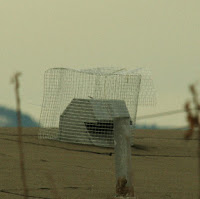 UPDATE: My dad set up a nice solution to the problem, as shown in the photo. Let's see if it works.
When the pecker started pecking, I was in the kitchen, so I
immediately turned on the noisy stove fan again, and the banging
stopped. Encouragingly, there was nothing today. But listen, flicker, I
have my ear out for you. You'd best mosey along before we take action
again.
UPDATE: My dad set up a nice solution to the problem, as shown in the photo. Let's see if it works.
When the pecker started pecking, I was in the kitchen, so I
immediately turned on the noisy stove fan again, and the banging
stopped. Encouragingly, there was nothing today. But listen, flicker, I
have my ear out for you. You'd best mosey along before we take action
again.
This is not a purely Vancouver problem by any means, as I found out from the Bad Astronomer in Colorado last year.
Well, he's back. Or was. Yesterday morning around 8 a.m., suddenly there was that familiar machine-gun metallic banging in the kitchen again. (The later hour makes sense, since it's over a month earlier in the season, so the sun is rising a bit later too, and I expect these guys time their noisemaking to the light.) I'm not sure if the bubble wrap fell off in the winter winds, or whether my dad, who lives in the other half of the duplex, removed it at some point.
 UPDATE: My dad set up a nice solution to the problem, as shown in the photo. Let's see if it works.
UPDATE: My dad set up a nice solution to the problem, as shown in the photo. Let's see if it works.This is not a purely Vancouver problem by any means, as I found out from the Bad Astronomer in Colorado last year.
05 February 2009
The big gap
 For the past couple of weeks I've been reading God's Crucible,
a history book by David Levering Lewis—which I gave to my dad for
Christmas, but which he's loaned back to me. Today I got a lot of
reading done, because my body was screwing with me: I'll have to skip my
cancer medications for the next day or two because the intestinal side effects, unusually, lasted all day today and into the night, and I have to give my digestive system (and my butt) a rest.
For the past couple of weeks I've been reading God's Crucible,
a history book by David Levering Lewis—which I gave to my dad for
Christmas, but which he's loaned back to me. Today I got a lot of
reading done, because my body was screwing with me: I'll have to skip my
cancer medications for the next day or two because the intestinal side effects, unusually, lasted all day today and into the night, and I have to give my digestive system (and my butt) a rest.Lewis's book covers, at its core, a 650-year span from the 500s to the 1200s, during which Islam began, and rapidly spread the influence of its caliphate from Arabia across a big swath of Eurasia and northern Africa, while what had been the Roman Empire simultaneously fragmented into its Middle Ages in Europe. That's a time I've known little about until now.
The history I took in school and at university covered lots of things, from ancient Egypt and Babylon up to the Roman Empire, and from the Renaissance to the 20th century, as well as medieval England. I learned something about the history of China and India, as well as about the pre-Columbian Americas. But pre-Renaissance Europe and the simultaneous rapid expansion of the dar al-Islam are a particularly big gap for me.
Whose Dark Ages?
I knew a little about Moorish Spain, and a tad about Charlemagne and Constantinople, but otherwise it was just the Dark Ages for me, and for a lot of students who learned the typical Eurocentric view of history. There was much more going on in more populated and interesting parts of the world, though. While Europeans (not even yet named that) eked along with essentially no currency, trade, or much cultural exchange beyond warfare with horses, swords, and arrows:- China went through the Sui, Tang, and Song dynasties, reaching the peak of classical Chinese art, culture, and technology.
- India also saw several dynasties and empires, as well as its own Muslim sultans.
- Large kingdoms of the Sahel in near-equatorial Africa arose, including those of Ghana, Takrur, Malinke, and Songhai.
- The Maya in Central America developed city-states and the only detailed written language in the Western Hemisphere.
- The seafaring Polynesians reached their most distant Pacific outposts, including Easter Island, Hawaii, and New Zealand.
In his book, Lewis flies through the origins of Islam, the foundations of the Byzantine and Roman branches of the Catholic Church after the fall of Rome, the interminable conflict between it and Zoroastrian Persia to the east, the Muslim caliphate's sudden rise up the middle to take over the eastern and southern Mediterranean, and the crossing of Islamic armies into Europe at Jebel Tariq (now called Gibraltar) in 711. Then things bog down a little.
I'm about half-way through the book, and Lewis throws out so many names, alternate names for the same people, events, places, and such that it's hard to keep up. He hops back and forth in time enough that what story he's trying to tell isn't always clear—he was won the Pulitzer Prize, but that was for more focused historical biographies, such as of W.E.B. Du Bois, rather than sweeping surveys like this one. His writing isn't overly complex, and I'm learning a lot, but it's a tough go sometimes. Still, I think it will be worth sticking it out.
04 February 2009
iLife '09 is worth the upgrade
 If you have a Mac, Apple's $100 Cdn iLife suite of programs is perhaps the best deal in software today. That may be true even if you don't
have a Mac, because if you buy one, iLife comes along free—and just a
few years ago, the features of any one of its programs would have cost
you more than the computer does today. So depending on what you do, it's
almost like you're getting the Mac for free instead.
If you have a Mac, Apple's $100 Cdn iLife suite of programs is perhaps the best deal in software today. That may be true even if you don't
have a Mac, because if you buy one, iLife comes along free—and just a
few years ago, the features of any one of its programs would have cost
you more than the computer does today. So depending on what you do, it's
almost like you're getting the Mac for free instead.When it first appeared in 2004, for instance, GarageBand inspired me to start recording music again after a long hiatus. iPhoto is an extremely capable photo cataloguing program, and even as a pretty keen photography enthusiast, it's what I use to manage my collection. For me, iMovie, iWeb, and iDVD come along as bonuses.
iDVD is capable enough on the rare occasions I need to make a video DVD. The new versions of iMovie are still pretty weird, in my book, but they work, and I may warm to the new iMovie '09 now that it's improved over the confusing reboot that was iMovie '08. iWeb—well, as a web guy, it's never been my cup of tea, and I gave up on it a few months ago after giving it a good two-year chance to justify its existence. But some people might like it.
iLife '09 is the latest iteration of the package, and I picked it up last week, shortly after it became available in stores. I'll be reviewing the new GarageBand for Inside Home Recording sometime soon, but there are already some other impressions on the web. Jim Dalrymple at Macworld looks at the new guitar-focused changes in GarageBand, Rick LePage examines iPhoto's new emphasis on face recognition and location awareness, and screenwriter John August takes a crack at iMovie '09.
I have to agree with Fraser Speirs that iPhoto's new integration with Facebook and Flickr looks way too heavy-handed. I actually don't want photos, tags, names, and such synchronized between my computer and those sharing sites. Usually, I just want to push photos out from iPhoto, and maybe make changes on the Web, but I don't want those changes propagating back and forth. I often prefer to collect very different sets in the two places, and may need to name people on my computer but not online, for instance. So I don't think I'll be turning those features on, but will use my old methods instead.
In iLife '09, GarageBand makes big changes, especially in new features (like Lessons) that i didn't even know I'd want, while still keeping what makes it great. iPhoto adds extremely cool new stuff that I'll definitely use, and some other stuff I definitely won't. iMovie may have redeemed itself enough that I'll work with it again. iDVD? We'll, it's still there. And iWeb? Despite good progress, it's just not the way I work with websites (I create almost everything in a text editor).
I'm happy with what I've seen from iLife '09 so far. For $100, as always, it's a total steal.
03 February 2009
The 25 random narcissistic things meme
Here are 25 random things about me. I was tagged twice for
this meme on Facebook, once by an acquaintance currently stationed in
Iraq, so I felt obligated. I have to say it was more fun to compile the
list than I expected. Now I'm supposed to tag 25 more people (!). Not
sure if I'll get to that many. If you're on Facebook and I tag you with
this, and you haven't done it already, and if you want to
participate—unlike a typical chain letter or meme, I impose no such
obligation on you—then read the rules at the bottom of my list here.
To do the tagging, go to Notes (in the Tabs section of your Profile page on Facebook), paste these instructions in the body of the note, type your 25 random things, tag 25 people (in the upper right corner of the Notes app), then click Publish. Or if you import your notes from your blog into Facebook, tag the note once it appears. Have fun.
- I was born three weeks before the first moon landing, and apparently cried through most of the event.
- My two daughters and I were born at the same hospital, St. Paul's in downtown Vancouver. My wife was born at Lions Gate Hospital in North Vancouver. My mother was born at Vancouver General Hospital. My dad was born in Berlin, Germany, in 1939 (good timing!).
- Finnish (which my grandparents spoke) was my first language, but I've totally forgotten it. I never really learned German (my father's first language) either. I picked up French pretty well in school, and was nearly bilingual for awhile, but that has become awfully rusty. Even so, I can still read out words in all those languages with excellent pronunciation, without being able to understand them very well if at all. I also took Latin for two years, briefly studying Russian too. All have been helpful in my day job of being a writer and editor in English, and were also useful during my science degree, with all the Latin and Greek terminology.
- The house I now share with my wife and daughters is one half of a duplex; my parents live in the other half. I have lived in this structure, which was built in 1967, for all but four years of my life. A poplar tree I planted in our yard in kindergarten now towers over the house.
- My hair was quite blond, with big waves, until I was five or six years old, when it began turning to the straight dark brown it is now. My eyes have always been able to appear either blue or green, depending on the light. If you look closely, you can see that's because I have a dark blue ring around the irises, then mottled green further in, and light brown speckles near the pupils.
- When I was a kid, my favourite colour was red. Now I prefer purple, but I don't own many clothes of either colour.
- I don't think that I ever believed in a god or gods, even when I was a little boy who did believe in Santa Claus.
- We first got a colour television in the early '70s, but I didn't notice a difference, because I had been imagining the colours on the black-and-white set anyway.
- Having grown up during Canada's conversion to metric, I instinctively think of speeds in kilometres per hour but fuel economy in miles per gallon, dimensions in inches and feet but volume in millilitres and litres, and temperature in Celsius but weight in pounds.
- In grade 5, when I was the same age my older daughter is now, my best friend and I, with our parents' full permission, took several day-long bike trips by ourselves across Greater Vancouver, such as to the airport and back, or to the North Shore. Hard to imagine kids that age doing it now.
- I was enough of a nerd in my pre-teens to learn pi to ten decimal places (3.1415926535) and the speed of light to similar precision, in both metric (299,792.458 km/s) and imperial (186,282.397 mi/s) units. I was still able to type those out just now without thinking about them.
- I'm pretty sure I've never experienced an outdoor temperature lower than about –20°C. I've visited plenty of places that get cold enough, just not at the times of year I've been there.
- I saw Pluto the (former) planet once, at Manning Park in southern central B.C., where I had to look through my dad's telescope, see a star, look for a dimmer star next to it, and then avert my eyes slightly to catch the dim spot of Pluto out of the corner of my eye. I was very, very cold.
- When my roommates and I first moved in together in 1987, we had more than one computer per person, but none of us owned an iron.
- While I've been a professional musician for close to 20 years, and made my full-time living at it for a while, I never took band class in school. I had four years of private guitar lessons before high school, but I taught myself drums, now my main instrument, when I was 18 and in second-year university.
- The big toe on my right foot has lacked a toenail since 1988.
- Although I've lived in Canada my whole life, and I've been to many cities around the world, including Melbourne, Las Vegas, Moscow, London, Honolulu, Rome, Los Angeles, Denver, and New York City, I have never visited Winnipeg, Montreal, Quebec City, the Maritime provinces, or any of Canada's three northern territories. I have also never set foot in Asia, South America, Africa, or Antarctica.
- Most of the guitar solos I ever play on my recordings or when jamming around are based on the generic blues-box scale positions I learned from the September 1990 copy of Guitar World, with Jeff Healey on the cover.
- Amusement park rides that spin sideways in any way make me want to throw up, usually within 20 or 30 seconds. Roller coasters, Ferris wheels, and the like are no problem, but even something as innocuous as the Tilt-A-Whirl turns me green.
- My wife helped me learn to enjoy extra-hot showers and baths, and I helped her learn to enjoy sleeping in.
- I keep an old pair of glasses to wear when I go swimming, so the plastic on my newer frames doesn't get dicoloured by the chlorine. No glasses is not an option—my vision is too poor.
- One reason I still try to play gigs with my band, despite my current health problems, is that at least once during every gig, often in the green room between sets, something will happen that sets me laughing uncontrollably. For example, on a chilly April morning last year, it was seeing bassist Doug layered up so much in his warm clothes and costume that he looked like this.
- I have quite a few scars, almost all of which are, for some reason, on the right side of my body. The vast majority have come from cancer-related surgeries in the past two years. One required more than 25 staples; another looks like a bull's-eye target on my abdomen and is about the diameter of a DVD.
- It's not unusual for our house to get an international courier delivery every weekday, usually cosmetic samples from New York for my wife to review on her podcast.
- My current sideburns were inspired by Jemaine from Flight of the Conchords, even though he has huge mutton-chops and mine are polite little strips of fuzz like my dad had 35 years ago. Jemaine named his first child Sophocles, but that didn't inspire me at all. Besides, my kids are a decade older.
To do the tagging, go to Notes (in the Tabs section of your Profile page on Facebook), paste these instructions in the body of the note, type your 25 random things, tag 25 people (in the upper right corner of the Notes app), then click Publish. Or if you import your notes from your blog into Facebook, tag the note once it appears. Have fun.
02 February 2009
Ten worst best cars
Via Ken Rockwell, here's the kind of list you don't see very often: Car and Driver admitting to a list of 10 Most Embarrassing Award Winners in Automotive History,
including many of their own choices. The Renault Alliance and Chevy's
Vega and Citation were all award-winners at one point. That is embarrassing.
One of the reason car aficionados love BBC's Top Gear is that they rarely make such mistakes. They even have a category of "WTF? Car" for particularly egregious examples of bad or misguided motor vehicle design. Scroll down the Foreman Blog home page for a fun list of them.
One of the reason car aficionados love BBC's Top Gear is that they rarely make such mistakes. They even have a category of "WTF? Car" for particularly egregious examples of bad or misguided motor vehicle design. Scroll down the Foreman Blog home page for a fun list of them.
01 February 2009
Where you once belonged
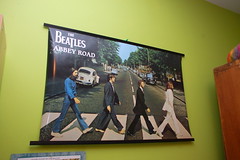 After linking to the excellent Playing The Beatles Backwards
review a few days ago, I've been listening to their stuff again with a
fresh ear, especially to some of the less famous tracks. And though I've
been playing Beatles music in a cover band for over 20 years, they still blow me away.
After linking to the excellent Playing The Beatles Backwards
review a few days ago, I've been listening to their stuff again with a
fresh ear, especially to some of the less famous tracks. And though I've
been playing Beatles music in a cover band for over 20 years, they still blow me away.Think about this: those four lads recorded Rubber Soul in less than a month, releasing it near the end of 1965. Then Revolver followed eight months later. Sgt. Pepper came ten months further on. So they recorded and released not only their three best albums, but three of the best rock albums of all time, encompassing at least a dozen of the greatest songs—all in a year and a half.
Oh, and they managed to put out a few singles you might have heard of during that time too: "We Can Work It Out," "Day Tripper," "Paperback Writer," "Rain," "Yellow Submarine," "Eleanor Rigby," "Penny Lane," and "Strawberry Fields Forever." Several of them didn't even appear on the albums. They were bonus songs.
Forty years on, it's easy to forget the almost thermonuclear burst of musical creativity The Beatles offered the world. Their recording career lasted from "Love Me Do" in mid-1962 until "I Me Mine" (from Let It Be) at the very beginning of 1970, a little over seven years. There's never been anything like it, before or since.
My older daughter watches MuchMusic and has me put on Top 40 radio in the car, but given the chance, she'd rather listen to The Beatles anytime, and their posters adorn her walls. The first few notes of "I Saw Her Standing There" can still bring a crowd to their feet dancing. "A Day in the Life" can make them weepy. "Hey Jude" will get them swaying. The Beatles, who did almost everything before I was born, still make me glad for the existence of music.
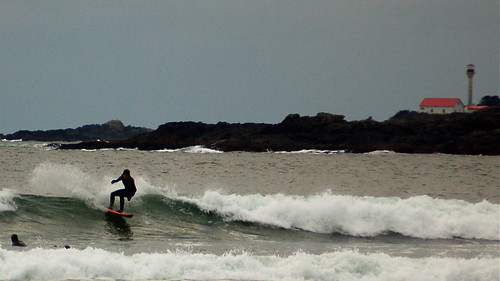
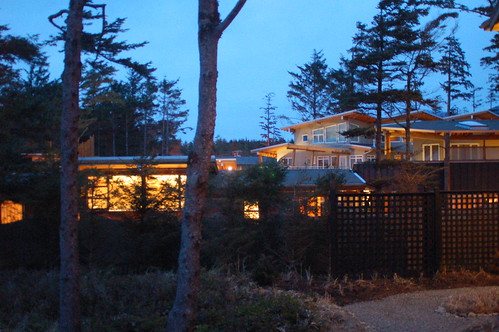
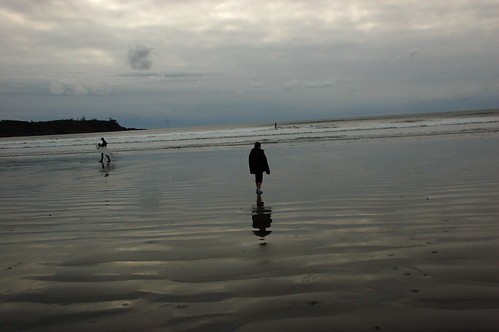


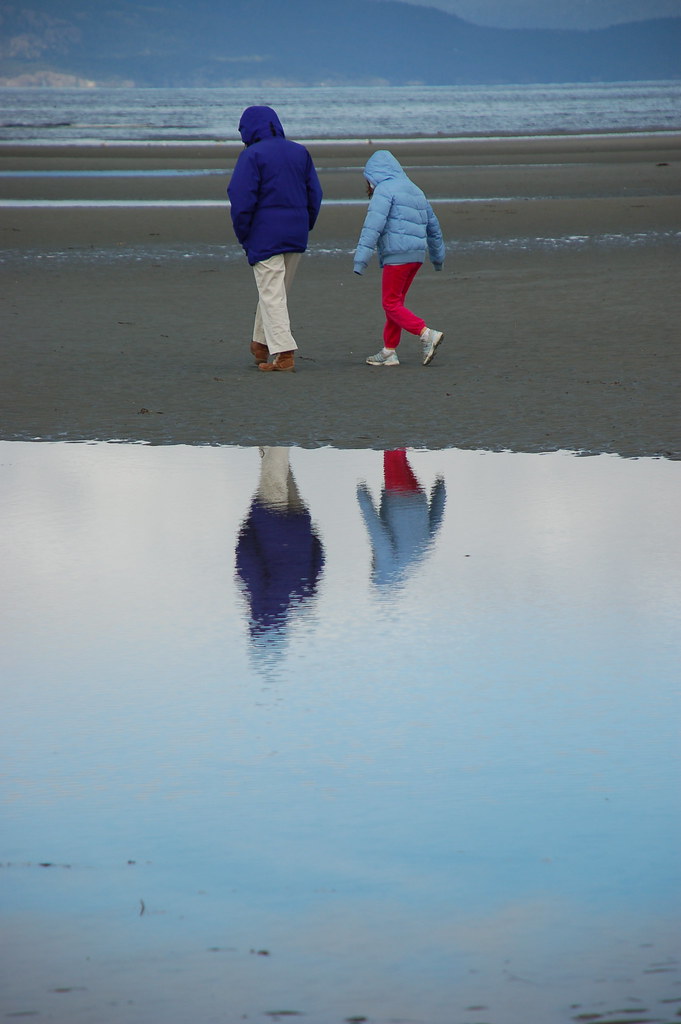
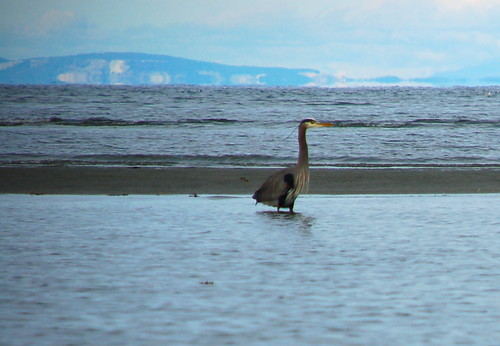
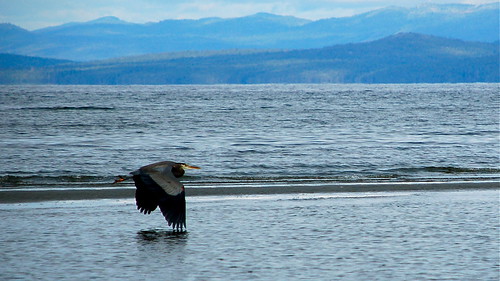
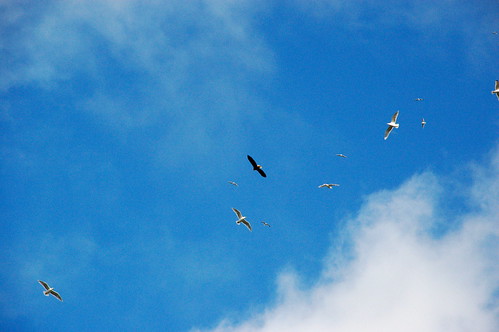

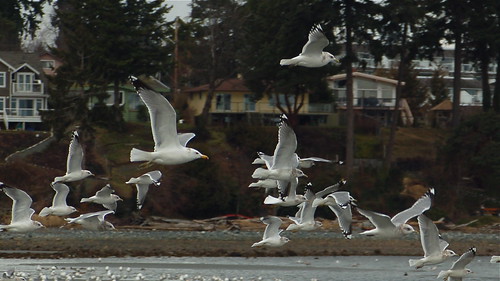
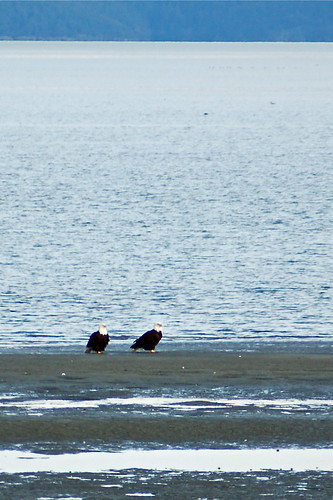

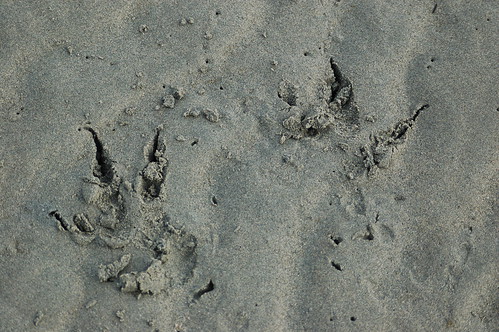
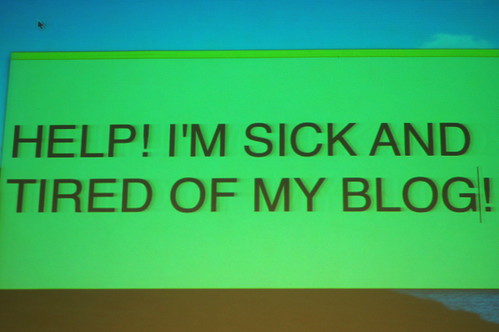
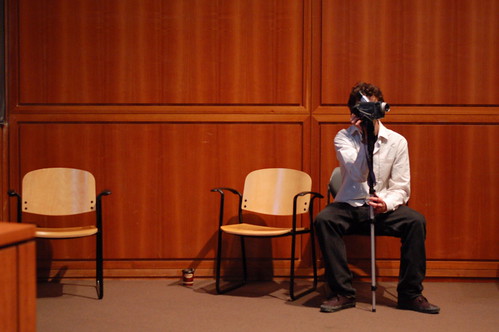

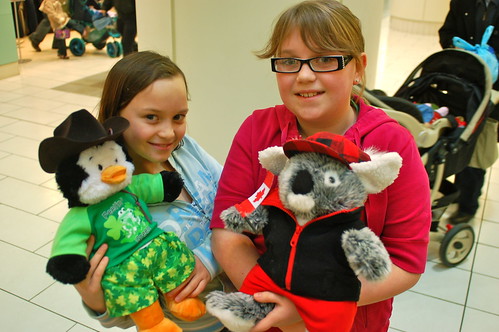
No comments:
Post a Comment